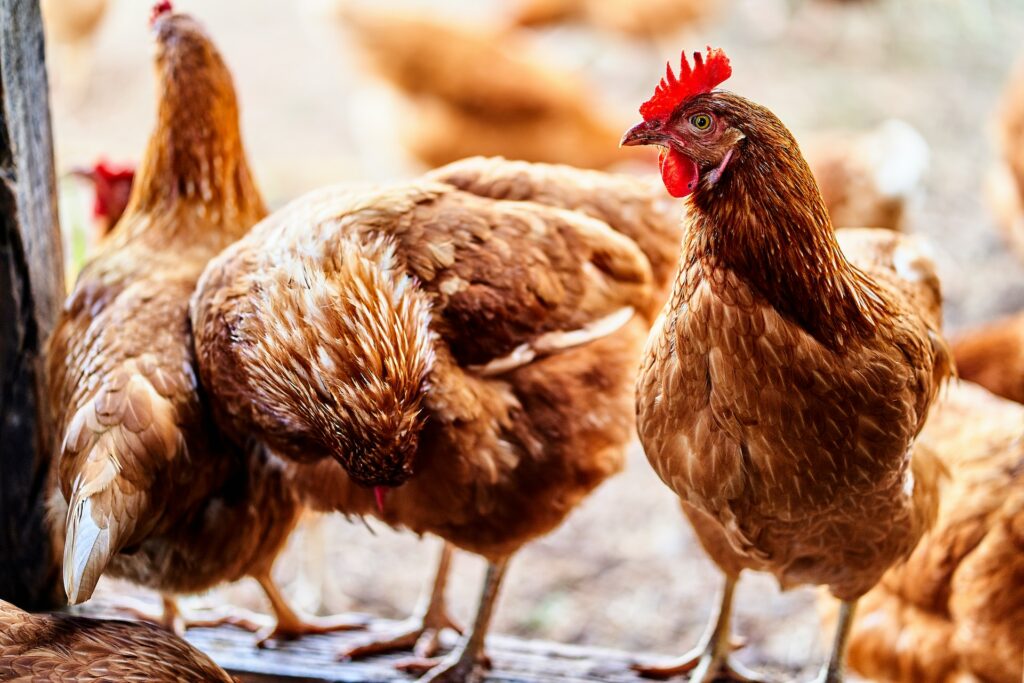
Though the current public health risk of H5N1 bird flu is low, the University of Florida (UF) is taking a proactive approach to education about the illness, which is responsible for one human death in the United States, as well as outbreaks among dairy cows and poultry.
UF’s H5N1 Coordination Group combines the expertise of about 40 scientists, UF/IFAS Extension specialists and representatives from the Southeastern Coastal Center for Agricultural Health and Safety (SCCAHS) at UF to develop and implement bird flu outreach efforts.
“Some of the information circulating about bird flu is not based on science, and that’s why UF has initiated this push to get vetted, science-based resources and education to various audiences,” said Ricky Telg, director of the UF/IFAS Center for Public Issues Education in Agriculture and Natural Resources (PIE Center) and leader of the Coordination Group. “We want to eliminate the potential for the situation to get worse.”
Newly published bird flu guides are now available on the PIE Center’s website. Created in partnership with the SCCAHS, the Florida Extension Disaster Education Network, the Florida Department of Health and the Florida Department of Agriculture and Consumer Services, the guides present answers to common questions about H5N1.
“Members of the H5N1 Coordination Group decided that the two categories of people most in need of science-based information about avian influenza were consumers and people who keep chickens in their backyards, so we tailored the content specifically for them,” Telg said.
Subjects covered in the guides include H5N1 transmission methods, recommended precautions and signs of infection in chickens.
Benjamin Anderson, an assistant professor in UF’s department of environmental and global health and leader of UF’s Emerging Pathogens Institute bird flu response team, is among the infectious disease experts who compiled the information featured in the bird flu guides.
Although the number of human H5N1 cases has remained relatively low at 70 cases in the United States, scientists are still regularly detecting the illness in migratory birds, which are a primary transmitter, as well as in wildlife and in commercial and backyard chickens, Anderson said.
“Backyard poultry owners, particularly those who live along prominent migratory bird flyways, could still be at risk for H5N1 transmission to their flock if the poultry are exposed to migratory birds,” Anderson said. “Right now, migratory bird movement is fairly minimal, but we expect the risk of H5N1 transmission to increase again once migratory bird movements also increase, closer to the fall.”
Humans – as well as other mammals, including dogs and cats – risk exposure to the virus through contact with bird feces and dead birds, according to the guides. Eggs, milk and chicken are generally safe if they are properly handled and prepared, but raw milk and raw poultry are not safe for human or animal consumption.
H5N1 Coordination Group education efforts extend beyond consumers and backyard chicken flock keepers. UF/IFAS Extension personnel across the state are undergoing professional training about bird flu so they can respond to concerns from the farmers and consumers they serve.
Cindy Sanders, director of UF/IFAS Extension Alachua County and a livestock agent, has teamed up with UF College of Public Health & Health Professions graduate students to develop biosecurity guidelines for county fairs and livestock shows. They established a series of questions fair organizers can ask participants, so everyone is better prepared for potential disease outbreaks, and they can mitigate outbreaks if they do occur.
Through webinars, Telg, Anderson and Extension agents are updating members of the agriculture sector about the latest H5N1 news, as well as resources available to safeguard themselves and their operations.
The intended culminating effect of all this outreach is a well-informed public capable of making smart health decisions.
“Bird flu is a serious health issue for both humans and animals, and we’re working together to share vital information, so everyone stays healthy,” Telg said.
Suggested Articles
No related articles found.



